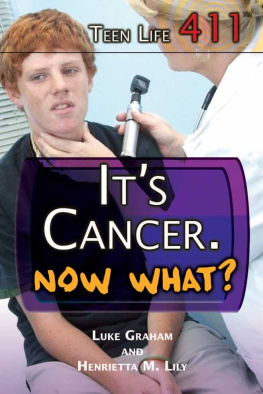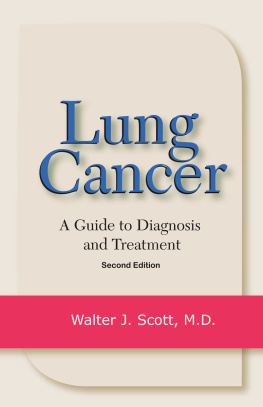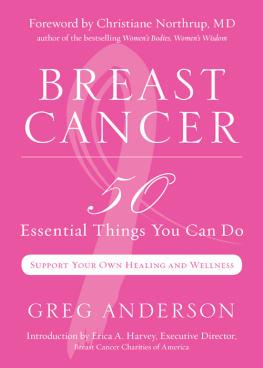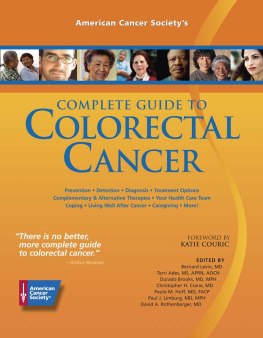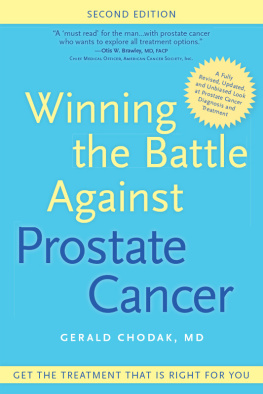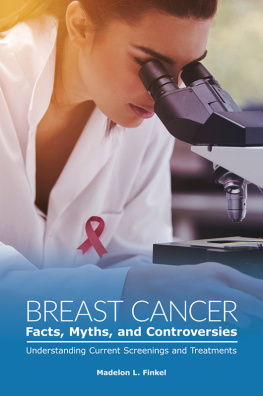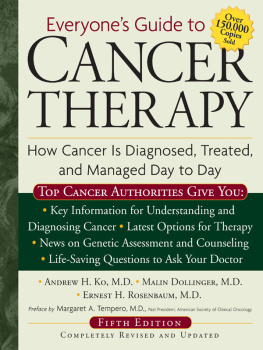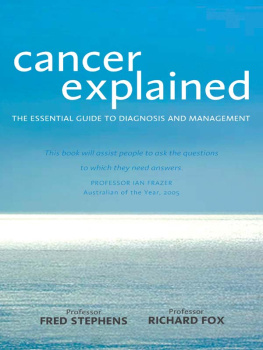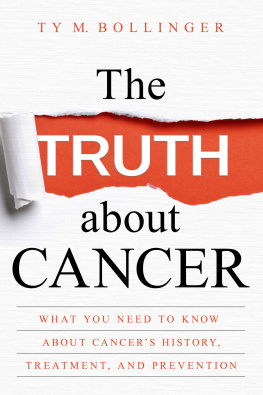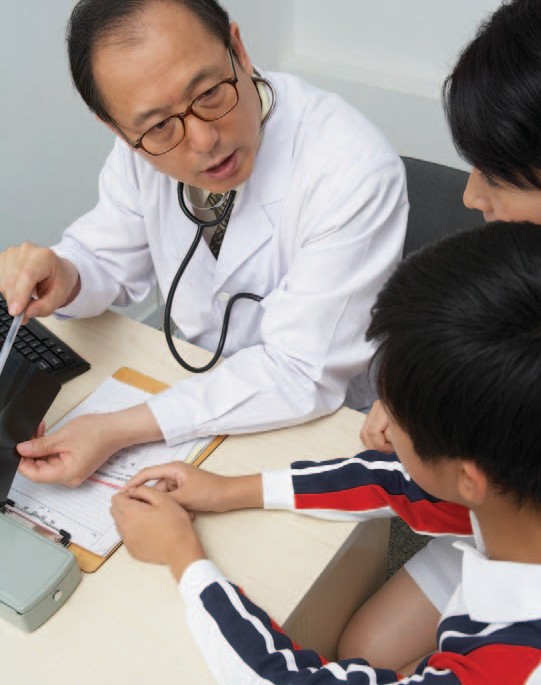Published in 2012 by The Rosen Publishing Group, Inc.
29 East 21st Street, New York, NY 10010
Copyright 2012 by The Rosen Publishing Group, Inc.
First Edition
All rights reserved. No part of this book may be reproduced in any form without permission in writing from the publisher, except by a reviewer.
Library of Congress Cataloging-in-Publication
Data Graham, Luke.
Its cancer: now what? / Luke Graham, Henrietta M. Lily.
p. cm.(Teen life 411)
Includes bibliographical references and index.
ISBN 978-1-4488-4652-8 (library binding)
1. CancerPopular works. I. Lily, Henrietta M. II. Title. RC263.G697 2012
616.99'4dc22
2010042036
Manufactured in the United States of America
CPSIA Compliance Information: Batch #S11YA: For further information, contact Rosen Publishing, New York, New York, at 1-800-237-9932.
INTRODUCTION
A doctor explains a boy's diagnosis to him and his mother.
I n past generations, people worried about being stricken by diseases like tuberculosis, smallpox, and cholera. These were illnesses that were often deadly. One of the goals of the medical profession is to solve the riddle of such diseases and find new and more effective ways of preventing, diagnosing, treating, and even eradicating them. Today, people are not as afraid of tuberculosis, smallpox, or cholera because the medical profession has found ways to prevent and effectively treat these diseases.
Sometimes, the medical profession has to keep looking for answers on certain kinds of illness. Even after years of research and experimentation, cures and treatments for certain diseases remain elusive or not as effective as hoped. Cancer is one of those illnesses. Cancer treatment and research can be traced back to ancient Egypt, about 1600 BCE. Cancer wasand isa mystifying disease.
It was not until the early twentieth century that some cancer treatments finally began to prove effective. These newer treatments were considered successful because some patients were cured. However, cancer stubbornly persists. It remains a disease that most people dread, even though the rate of successful treatment outcomes has risen even as mortality rates have fallen.
Researchers are still hard at work looking for better ways to prevent, diagnose, and treat cancer. The science that they practice is called oncology, and they are referred to as oncologists. New methods or technologies for researching cancer are also being developed. With ever-greater advances in science and technology, answers to questions about cancer are becoming increasingly clear and detailed.
Even though cancer is slowly being demystified and treated more effectively, most people still become afraid when they hear the word cancer. Fear of the disease has been so great that it was not until the late twentieth century that people were willing to talk about cancer in public. Some people still consider the subject taboo. When people are afraid to talk about a certain subject, it keeps the facts from being known. Superstition and misinformation take the place of actual and useful knowledge. In many cases, the lack of knowledge about cancer has caused unnecessary grief and fear. Often what people imagine about cancer is far worse than the actual prognosis or outcome.
One of the most important things to remember about cancer is that it is OK to talk about it. We no longer have to be afraid of the word, and we certainly should not be afraid of anyone who hasor hadcancer. Its important to seek answers to questions about cancer because as more is learned, more knowledge will be gained. The more knowledge one is armed with, the less there is to fear.
This book will cover topics relating to cancer, including causes, prevention, diagnosis, and treatment. If you know someone with cancer or have it yourself, the best thing to do is to learn more about it. The more you know, the less helpless you or a loved one will feel during the difficult time of being diagnosed and treated. Many cancer patients have said that once they learned more about the disease, they felt more in control of what was happening to them.
Even if you do not know anyone with cancer, it is still important that you learn about it. Someone you know, or you yourself, may be at risk for developing certain cancers or may be diagnosed with cancer someday. There are things that anyone can dostarting right nowto greatly lower his or her risk of developing certain kinds of cancers. Knowing the facts about the causes of certain cancers and the risks associated with them is important. It can help you avoid engaging in activities that increase your chances of developing certain kinds of cancer. You can also help your loved ones avoid these cancer-causing activities.
CHAPTER 1
WHAT CANCER IS AND HOW IT WORKS
O ne of the reasons why cancer remains challenging to researchers is that it is not a single disease. The word cancer is used to describe more than one hundred different diseases. Some cancers are very serious, while others are almost never life threatening. Many cancers fall somewhere in between. Each kind of cancer has its own name. Cancers behave differently in different individuals. Some develop very quickly, whereas others develop very slowly. Different cancers are treated in different ways, and the results from these treatments vary from person to person. However, all of the various cancers have one thing in common: the process of how they begin to grow and develop in the body.
T he M echanics of C ancer
Cancer begins at the cellular level. That means it starts to develop in the bodys cells. There are trillions of tiny cells that make up the human body. It is important to know, however, that just because the human body is made up of so many cells, it is not inevitable that some of them will become cancerous.
There are many different types of cells, each with a specialized job to perform in the body. The human body experiences daily wear and tear that damages the cells. New cells are needed to replace old, damaged cells. In order to make new cells, each cell divides in two. Ordinarily, cells divide and produce more cells only when the body needs them. Cells get their directions to divide from genes. Genes control several different functions of the cells. This process of new cell creation and the replacement of old cells is how the human body stays healthy and strong.
A scanning electron microscopic image reveals cancer cells developing on the surface of healthy tissue.
Cancer starts when a few cells of the body go haywire by dividing out of control. A cancer cell divides even when new cells are not needed. A cell that goes haywire is an abnormal cell. Abnormal cells grow more quickly than normal cells. When the abnormal cells keep dividing, a mass of tissue forms. Tissue is a collection of cells that perform a specific function. The tissue that is formed from abnormal cells, however, does not have a function. The tissue made by abnormal, cancerous cells is abnormal, too.

